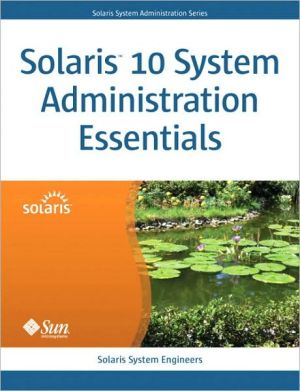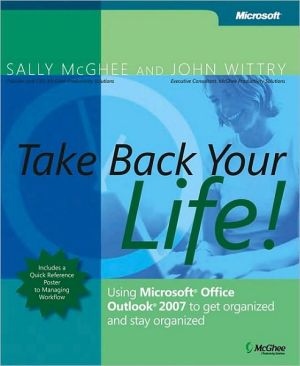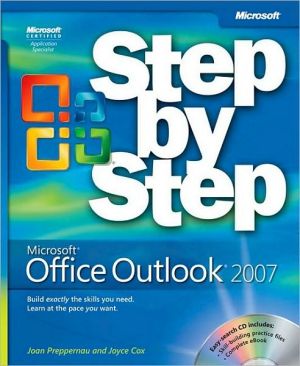Solaris 10 System Administration Essentials
Solaris™ 10 System Administration Essentials is the first book to concisely yet comprehensively cover all of the breakthrough features of the Solaris 10 operating system. The Solaris OS has a long history of innovation, and the Solaris 10 OS is a watershed release that includes features such as:\ \ Zones, which provide application isolation and facilitate server consolidation\ ZFS™, the file system that provides a new approach to managing your data with an easy administration interface\ The...
Search in google:
Solaris™ 10 System Administration Essentials is the first book to concisely yet comprehensively cover all of the breakthrough features of the Solaris 10 operating system. The Solaris OS has a long history of innovation, and the Solaris 10 OS is a watershed release that includes features such as Zones, which provide application isolation and facilitate server consolidation ZFS™, the file system that provides a new approach to managing your data with an easy administration interface The Fault Management Architecture, which automates fault detection and resolution The Service Management Facility, a unified model for services and service management on every Solaris system Dynamic Tracing (DTrace), for troubleshooting OS and application problems on production systems in real timeIn addition, the Solaris 10 OS fully supports 32-bit and 64-bit x86 platforms, as well as the SPARC® architecture.The book’s key topics include Installing, booting, and shutting down a system Managing packages and patches (software updates) Controlling system processes Managing disks and devices Managing users Configuring networks Using printing servicesSolaris™ 10 System Administration Essentials is part of a new series on Solaris system administration. It is a practical guide to deploying and managing the Solaris 10 operating system in a business or academic environment. The book is easy to read and rich with examples–a perfect companion for system administrators who are deploying the Solaris OS for the first time.
Preface xviiAbout the Authors xxiChapter 1: Installing the Solaris 10 Operating System 11.1 Methods to Meet Your Needs 11.2 The Basics of Solaris Installation 21.3 Solaris JumpStart Installation 131.4 Upgrading a Solaris System 251.5 Solaris Live Upgrade 26Chapter 2: Boot, Service Management, and Shutdown 332.1 Boot 332.2 Service Management Facility 392.3 Shutdown 46Chapter 3: Software Management: Packages 473.1 Managing Software Packages 473.2 What Is a Package? 473.3 Tools for Managing Software Packages 493.4 Installing or Removing a Software Package with the pkgadd or pkgrm Command 503.5 Using Package Commands to Manage Software Packages 51Chapter 4: Software Management: Patches 594.1 Managing Software with Patches 594.2 What Is a Patch? 594.3 Patch Management Best Practices 614.4 Example of Using Solaris Live Upgrade to Install Patches 754.5 Patch Automation Tools 864.6 Overview of Patch Types 884.7 Patch README Special Instructions 934.8 Patch Dependencies (Interrelationships) 96Chapter 5: Solaris File Systems 995.1 Solaris File System Overview 995.2 UFS File Systems 1055.3 ZFS File System Administration 1175.4 NFS File System Administration 1275.5 Removable Media 1335.6 Pseudo File System Administration 136Chapter 6: Managing System Processes 1416.1 Overview 1416.2 Monitoring the Processes 1456.3 Controlling the Processes 1586.4 Process Manager 1646.5 Scheduling Processes 170Chapter 7: Fault Management 1797.1 Overview 1797.2 Fault Notification 1817.3 Displaying Faults 1827.4 Repairing Faults 1847.5 Managing Fault Management Log Files 1847.6 Managing fmd and fmd Modules 1887.7 Fault Management Directories 1937.8 Solaris Fault Management Downloadable Resources 193Chapter 8: Managing Disks 1978.1 Hard Disk Drive 1978.2 Disk Terminology 1998.3 Disk Device Naming Conventions 2008.4 Overview of Disk Management 2028.5 Disk Management Procedures 217Chapter 9: Managing Devices 2359.1 Solaris Device Driver Introduction 2359.2 Analyzing Lack of Device Support 2369.3 Installing and Updating Drivers 2519.4 When Drivers Hang or Panic the System 2669.5 Driver Administration Commands and Files 270Chapter 10: Solaris Networking 27510.1 Introduction to Network Configuration 27510.2 Setting Up a Network 27710.3 Monitoring Network Performance 304Chapter 11: Solaris User Management 30911.1 Solaris Users, Groups, and Roles 30911.2 Managing Users and Groups 31411.3 Managing Roles 318Chapter 12: Solaris Zones 32112.1 Overview 32112.2 How Zones Work 32312.3 Branded Zones 32412.4 Network Interfaces in Zones 32412.5 Devices in Zones 32512.6 Packages and Patches in a Zones Environment 32512.7 Administering Zones 32612.8 Halting, Uninstalling, Moving, and Cloning Zones 33312.9 Migrating a Zone to a New System 33412.10 Deleting a Zone 33612.11 Listing the Zones on a System 33612.12 Zones Usage Examples 337Chapter 13: Using Naming Services 34113.1 Using Naming Services (DNS, NIS, AND LDAP) 34113.2 Name Service Switch File 34713.3 DNS Setup and Configuration 35013.4 NIS Setup and Configuration 35113.5 LDAP Setup and Configuration 356Chapter 14: Solaris Print Administration 36914.1 Overview of the Solaris Printing Architecture 36914.2 Key Concepts 37014.3 Solaris Printing Tools and Services 37114.4 Network Protocols 37214.5 Planning for Printer Setup 37314.6 Setting Up Printers with Solaris Printer Manager 37914.7 Setting Up a Printer on a Print Client with Solaris Print Manager 38514.8 Administering Printers by Using LP Print Commands 38514.9 Troubleshooting Printing Problems 392Index 395








